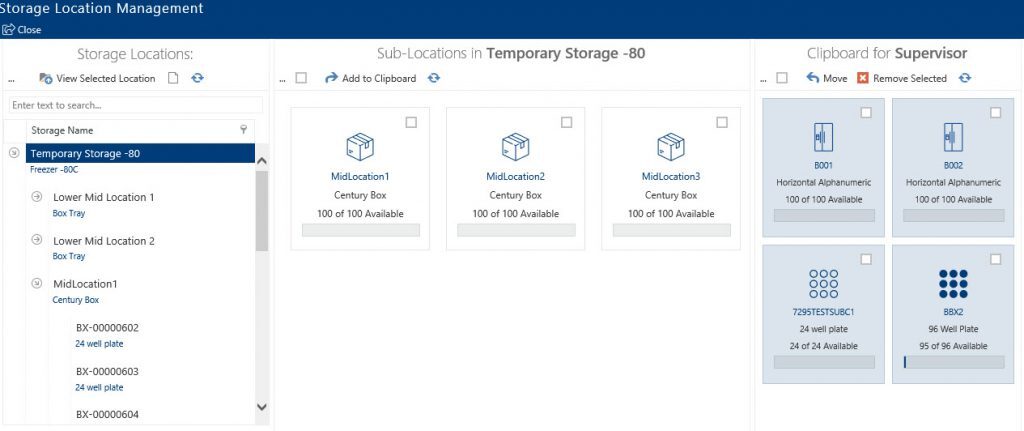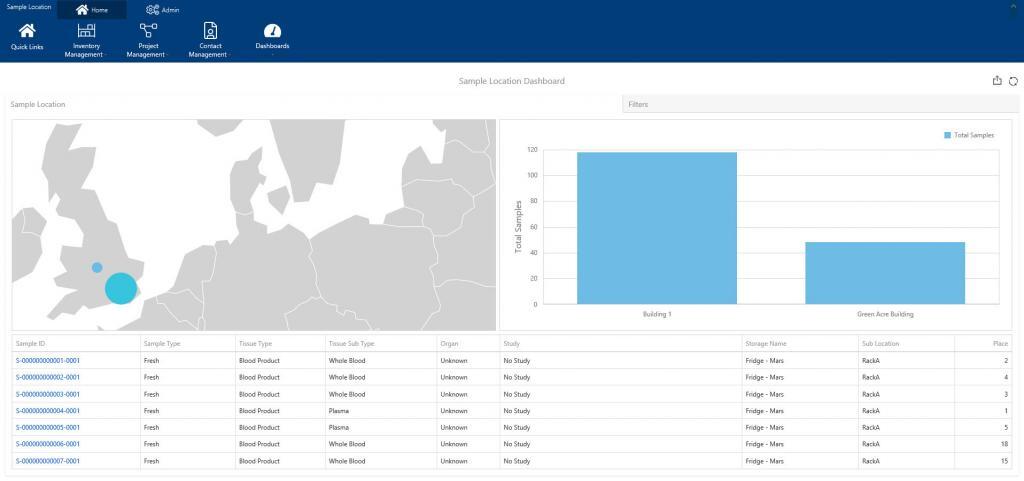Do you know what’s in your laboratory sample freezers and storage without opening them? If you dread the questions “Now, where did we put that sample?” or “What do you think is in that container?”, then it might be time to think about using a laboratory information management system (LIMS) to help you manage your sample inventory.
You may be thinking “we already use Excel that tells us where our samples are”. Or even “our sample management system displays our freezers as a picture so we can see where our samples are”. That’s great but what about finding available space? Could you easily move and audit your samples if there was a problem with the freezer? Or reserve contiguous spaces in storage for samples you’re expecting to receive or create?
There’s more to a LIMS than just displaying a pretty view of your samples in your freezers.
Samples aren’t just stored in freezers
You may store your biospecimens in all sorts of places, not just freezers. What about your cupboard with your histology slides, fridges, drawers and good old-fashioned boxes?
Plus, even if you only store samples in freezers these come in all sorts of configurations and layouts. So, you’ll want to define storage information around these sometimes unstructured and varied repositories. Sample management systems with pre-defined storage layouts can be useful but sometimes there isn’t a template for what you need. A LIMS that allows you to create your own unlimited-levels storage definitions, such as Achiever Medical, offers you ultimate flexibility. What’s more, it not only tells you what’s currently in storage but also allows you to plan by enabling you to reserve storage slots for samples you are expecting. Helping you manage current storage requirements and prepare and plan future capacity requirements.

Displaying your sample inventory in a graphical format
If you can see your sample inventory in a graphical format it makes it much easier when you are processing and working with your biospecimens as you can check a sample’s position visually.
However, there are other ways of viewing your sample inventory from a completely different perspective. If your sample inventory is spread across several locations – including at external biorepositories – it can be easier to see this information on a map. This can be especially useful if you are a virtual Biobank where you don’t store any samples onsite but provide a centralised, searchable inventory to source samples. Plus, you can see where space is available for any relocations.

Quality control measures to ensure the validity of your samples
The quality of your samples will affect the validity of your research. It also affects the potential monetary value of your samples. If you follow ISBER best-practice: Recommendations for Repositories, quality control around how you store your samples is important to you.
Sample inventory management systems that allow you to set and monitor temperature thresholds for each storage repository give you additional quality control measures. Plus, LIMS software, like Achiever Medical, use automated email alerts to notify the relevant personnel if the imported storage temperature data is outside the threshold limits.
Advanced sample inventory management software also allows you to carry out your own internal, random audits. You can use this functionality to check your samples are where they should be. Plus, you can record any issues as well as any corrective and preventative actions.
Finally, when assessing a sample’s viability knowing how long it’s been sat in storage can have a significant impact. LIMS that audit when you check samples in and out of storage give you a clear indication of storage duration. Plus, some systems can increment the sample thaw count for your frozen biospecimens. Giving you greater insight into the potential viability of your samples.
The benefits of LIMS software for sample inventory management
A LIMS can tell you much more about your samples that where you are currently storing it. They offer you valuable insight into:
- Storage capacity to help you plan and manage your resources
- Sample quality to enable you to define quality control and assurance measures to maintain your samples’ value
- Sample viability to help with sample selection and give you more confidence in your research results.
Giving you a nice view of your sample inventory is just the beginning!
References
- ISBER Best-Practice: Recommendations for Repositories – https://www.isber.org/page/BPR

Comments are closed.